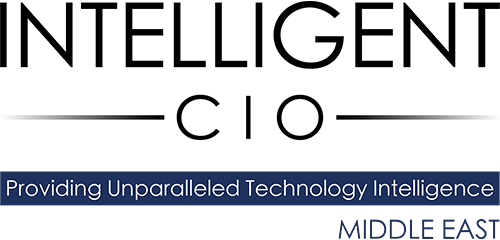Finally, there is a light at the end of the pandemic tunnel. As countries get closer to the easing of lockdowns and social restrictions, many organisations are starting to look forward to welcoming employees and clients back to the office. But if enterprise organisations are thinking that this is the end of working from home, they need to think again. Industry experts look at the pro and cons of remote working and why enterprises in the Middle East should embrace a high breed model if they want to appeal to new talent.
While working from home was initially a reactionary solution to the COVID-19 pandemic and the lockdown restrictions that governments in the Middle East region had imposed, now that it has demonstrated its value, it is here to stay. And as the need for organisations to reassess their remote work and learning capabilities, in order to create a digital workplace that’s ready for anything and ensures productivity from anywhere garners momentum, CIOs and IT teams have been grappling on how best to embrace the work from anywhere model for their organisations.
Matt Hancocks, Senior Director Analyst, Gartner, said there are many reasons why organisations in the Middle East should start to embrace working from home. Hancocks said these range from organisational effectiveness, productivity, employee experience in, but more importantly is the potential global talent war. “One of the main considerations is what will this mean for accessing talent. Many organisations, especially in IT roles, are looking at sourcing talent from outside their geographies, via a remote research model,” he said. “But also, those companies that do offer greater flexibility are likely to be better attracters of talent and could pull talent away from those organisations that don’t offer remote work.”
Osama Al-Zoubi, CTO, Cisco Middle East and Africa, agreed with Gartner’s Hancocks and said: “Last year, Cisco commissioned a Workforce of the Future survey, with over 10,000 workers across 12 markets in Europe, Middle East, Africa and Russia (EMEAR). The intention was to understand what was working well during the work-from-home phase, what was no longer fit for purpose and how to build a future workplace that caters to all.”
According to Al-Zoubi, the survey revealed that even in a post-pandemic world, employees wanted to keep hold of many of the positives that had emerged in the new way of working. “These benefits include having increased autonomy, working well as a dispersed team and being able to keep hold of faster decision-making. Even though only 5% of those surveyed worked from home most of the time before the lockdown, now an overwhelming majority hope to keep this increased independence,” he said. “87% of people told us that they want greater ownership in defining how and when they use office spaces – blending between being office-based and working remotely.”
AMIR SOHRABI, AREA VP, EMERGING MARKETS, CITRIX
Despite the practical benefits experienced by many people due to remote work, it is essential that companies pay attention to their employees’ mental and physical well-being. Hybrid work models have the potential to create a new digital divide that, if left unchecked, will quickly establish two classes of workers and infuse the workplace with inequity and bias. To successfully make the leap, companies will need to implement technologies and new work policies that create an equitable environment, empowering both remote and in-office employees to engage and collaborate equally, transparently and efficiently.
Recent research from Citrix has confirmed that remote work is here to stay, with 82% of all respondents agreeing that it will be more common post-pandemic and 28% say it has had a positive impact on time management, flexibility and overall performance. In addition, 41% believe their personal lives have been positively affected as the lack of a commute has given them a chance to spend more time with family, take on a hobby or simply get extra sleep. It is clear now that hybrid work models, powered by the right digital tools, can lead to a superior user experience, increased employee engagement, greater productivity and lower costs.
That same study shows that remote and flexible work options are now key to attracting and retaining talent, with 55% saying that businesses will miss out on top talent if they do not offer flexible work options and 45% saying that if they were to change jobs, they would only accept a role which offered flexible and remote work options.
The hybrid model is also crucial to attracting younger generations. Our latest research, The Born Digital Effect reveals that 90% of born digital employees in the UAE do not want to return to full-time office work post-pandemic, preferring a remote or hybrid model instead.
For all the challenges caused by the pandemic, office workers are still reporting improvements to their personal lives and careers due to remote working. If people can find a silver lining in even these difficult circumstances, we have an opportunity to evolve work post-pandemic and see a new generation of happier workers that stay committed to their companies longer, having been given the choice of working wherever is best for them. To make it happen, businesses need to look up from the operational side and dedicate time and resource to identifying the core values of their organisation in a post-pandemic world, with a hybrid workforce which is looking to be supported and engaged by their employer. Culture is a critical differentiator in attracting and retaining talent and businesses must prioritise this to ensure that they are future-ready.
ENAS AL ISA, HUMAN RESOURCE SUPERVISOR, TECHNOLOGY STRATEGIES MIDDLE EAST
It’s been over a year of remote working and it is quite evident that remote or hybrid working options to employees offers increased productivity by employees and operational cost benefits to employers. It is also estimated that by 2025, 70% of the workforce will be working remotely at least five days a month. However, before jumping into the bandwagon with an assumption of benefit to business, it is important for a company to assess its current office culture, team sizes and operational requirements. The benefits of remote working can be just as advantageous for the employers as the employees and therefore must be well assessed before deciding the course of action.
Since the fear of the pandemic is still prevalent, the last thing a company wants is to open its offices fully and expect employee return only to detect cases that will not only disrupt business but also pose a threat to employees’ health. This leads to added burden of financial loss due to disruption or increased employee health care expenses. A hybrid workplace therefore keeps employees safe during these uncertain times.
While remote working was implemented as a coping mechanism during the pandemic to sustain businesses, employers and employees everywhere have realised that a healthy pattern in remote working has many benefits. These include increased productivity, employee retention and cost advantages.
Aside from the security concerns, other issues organisations be looking at when developing and adopting a hybrid model to give employees freedom to choose between tradition office environments and working remotely include ensuring an efficient, productive and secure hybrid work environment is vital. Some of the other areas that employers must be looking at over and above security are: seamless connectivity and transparency, managing the hybrid team, managing unconscious bias, impact on culture, collaboration abilities and, employee wellbeing and social engagement.
Aside from that, the common challenges that CIOs and IT team have faced when it comes to employees working from home include the flow of communication. Communication is one of the most critical factors of a work culture across all members of the entity. It keeps every team member updated and helps maintain a healthy workflow. Hence, regular team meetings is crucial (virtual or physical) to bridge the communication gap between team members and build cognitive and emotional trust.
Going forward Companies are increasingly adopting extended work from home policies. Before the outbreak, only 7% of workers in the US had access to a ‘flexible workplace’ benefit or telework according to Pew Research Centre. Today this has changed. The pandemic has clearly ushered in new ways of working and whole range of benefits have emerged on top of what a traditional workplace provides. Companies are now choosing to go the hybrid model for the long term, hence adopting remote work needs and policies and embedding them into the company’s culture. Here are a few ways that organisations will alter to keep this going and reap benefits for the long-term.
Creating a culture of security and establishing a new, updated cybersecurity strategy is critical for organisations moving with hybrid workforce models. This means implementing the tools needed to help advance business and security objectives, from multi-factor authentication to SD-WAN. In turn, these solutions will also enable businesses to be more productive. Building out a robust cybersecurity plan for a hybrid workforce starts by identifying user types and establishing controls that protect the systems, networks, software and data they need for their jobs. As part of a hybrid workplace cybersecurity strategy, organisations should also think about ways to better enforce authorisation and authentication policies. For example, multi-factor authentication makes it more difficult for a cybercriminal to compromise user accounts and passwords in a credential theft attack.
The Coronavirus pandemic has presented us with a unique, double-pronged view of change. It is both reshaping and redefining how business gets done, enabled by the trajectory of Digital Transformation that began long before COVID-19 forced organisations to rethink their strategies for the purpose of Business Continuity.
As an example, permanently shifting a portion of the workforce from centralised offices to home offices help reduce capital costs like climate control, office infrastructure and rent or building loans. These cost savings can then be used to fund the necessary technology and cybersecurity costs associated with the ‘new normal’ of managing an expansive remote workforce.
Under normal circumstances, many organisations rely upon a perimeter-based security model. Under which, anyone inside the network is considered trusted, while outside parties are potentially malicious. This enables an organisation to identify anomalous connection attempts based upon the location and timestamp (since most workers operate during normal business hours). With a fully remote workforce, this traditional model is no longer applicable since both legitimate users and potential threats connect to resources from outside of the network and may work at odd hours. Additionally, when employees are working remotely, the probability of an unauthorised users gaining access to and control over an employee’s devices is higher.
Because of this, anything on a home network that connects out to the Internet is a potential conduit for bad actors. Super users tend to not only have access to mission-critical corporate resources but are more likely to be high-value individuals prone to targeted attacks. Hence, super users working remotely need a secure island completely firewalled off from the rest of the home network and a secure connection back to the office. The added security, however, must be balanced with super users’ needs for higher connectivity.
Employees seem to prefer remote work – a recent report from Pew Research found that about half of those surveyed would like to stay remote, at least part-time, even after the pandemic. And it’s not just more users requesting access outside the traditional perimeter. Indeed, the new normal is characterised by a much more distributed and disaggregated enterprise ecosystem. This not only expands the perimeter but permanently changes enterprise networking, requiring a stronger focus on broad, integrated and automated solutions.
ALAIN PENEL, REGIONAL VICE PRESIDENT MEA, FORTINET
Creating a culture of security and establishing a new, updated cybersecurity strategy is critical for organisations moving with hybrid workforce models. This means implementing the tools needed to help advance business and security objectives, from multi-factor authentication to SD-WAN. In turn, these solutions will also enable businesses to be more productive. Building out a robust cybersecurity plan for a hybrid workforce starts by identifying user types and establishing controls that protect the systems, networks, software and data they need for their jobs. As part of a hybrid workplace cybersecurity strategy, organisations should also think about ways to better enforce authorisation and authentication policies. For example, multi-factor authentication makes it more difficult for a cybercriminal to compromise user accounts and passwords in a credential theft attack.
The Coronavirus pandemic has presented us with a unique, double-pronged view of change. It is both reshaping and redefining how business gets done, enabled by the trajectory of Digital Transformation that began long before COVID-19 forced organisations to rethink their strategies for the purpose of Business Continuity.
As an example, permanently shifting a portion of the workforce from centralised offices to home offices help reduce capital costs like climate control, office infrastructure and rent or building loans. These cost savings can then be used to fund the necessary technology and cybersecurity costs associated with the ‘new normal’ of managing an expansive remote workforce.
Under normal circumstances, many organisations rely upon a perimeter-based security model. Under which, anyone inside the network is considered trusted, while outside parties are potentially malicious. This enables an organisation to identify anomalous connection attempts based upon the location and timestamp (since most workers operate during normal business hours). With a fully remote workforce, this traditional model is no longer applicable since both legitimate users and potential threats connect to resources from outside of the network and may work at odd hours. Additionally, when employees are working remotely, the probability of an unauthorised users gaining access to and control over an employee’s devices is higher.
Because of this, anything on a home network that connects out to the Internet is a potential conduit for bad actors. Super users tend to not only have access to mission-critical corporate resources but are more likely to be high-value individuals prone to targeted attacks. Hence, super users working remotely need a secure island completely firewalled off from the rest of the home network and a secure connection back to the office. The added security, however, must be balanced with super users’ needs for higher connectivity.
Employees seem to prefer remote work – a recent report from Pew Research found that about half of those surveyed would like to stay remote, at least part-time, even after the pandemic. And it’s not just more users requesting access outside the traditional perimeter. Indeed, the new normal is characterised by a much more distributed and disaggregated enterprise ecosystem. This not only expands the perimeter but permanently changes enterprise networking, requiring a stronger focus on broad, integrated and automated solutions.
Click below to share this article

